Characteristics of hydrangea Pinky Promise
There is never too much hydrangea. Each variety has its own unique flavor. One of the brightest representatives of the paniculate hydrangea species is the Dutch variety “Pinky Promise”. It won the hearts of gardeners and landscape designers with its highly decorative inflorescences during flowering.
| Content:
|
Description of hydrangea
Compact, medium-sized, self-pollinating variety. Based on the type of trunk, it belongs to the group of tree-like shrubs. Strong shoots resist wind and precipitation, hold the shape of the bush, preventing it from scattering in different directions. The stems are covered with pointed ellipse-shaped leaves. Thanks to their rich dark green color, the leaves contrast beautifully with the bright buds. The surface of the leaf blade is wrinkled, pubescent on the underside.
|
Hydrangea paniculata "Pinky Promise" |
The cone-shaped inflorescences are large (up to 25 cm) and consist of flowers with a weak aroma. The color of the buds changes depending on the flowering phase. The inflorescences bloom with dazzling white flowers, while the top of the panicle has a lime-greenish tint. In the middle phase (August), the buds gradually turn pink and in September acquire a bright, rich pink color.
|
Characteristics of the variety
|
Site selection and soil preparation
Feels comfortable both in a sunny place and in moderate shade. The planting site is chosen based on the region in which the seedling will grow. In the south, to protect from the scorching sun, it is preferable to plant in shaded areas. In the middle zone and the zone of risky farming, the most illuminated places are chosen.
The variety is demanding on soil composition. In sparse areas it develops poorly, the shoots are weak, the inflorescences are small and inconspicuous. Will show vigorous growth in loose, fertile, well-moistened and breathable loamy and sandy areas. A lover of sourness, she will be happy to grow in moderately acidic soils, with a pH level below 7. Excessively acidic soil is unacceptable; it is reduced by adding lime.
You can prepare the optimal soil mixture yourself. It contains:
- garden humus;
- peat or pine litter;
- vermiculite;
- complex mineral fertilizers.
Landing
The procedure is carried out in the spring, when the earth has warmed up sufficiently, and in early autumn, before the soil has had time to cool and there is time for normal rooting before the first frost.
- The size of the planting hole must correspond to the size of the root system of the seedling. When digging a hole, the top fertile layer is freed from weeds and set aside; it will be useful when planting.
- The hole is well shed with water.
- Drainage is poured into the bottom of the pit - fine expanded clay.To ensure good air permeability of the roots and prevent water stagnation by 10 kg. fertile soil will need at least 5 kg. expanded clay.
- Prepare the optimal soil mixture for planting. The previously deposited top fertile layer of soil is sent to the mixing container. It needs to be enriched and loosened. To do this add:
- Vermiculite. It loosens the soil well, absorbs moisture and, if necessary, gives it to the plant. For 10 kg. add 2 kg of soil. vermiculite.
- High-moor peat or pine litter to make the soil mixture slightly acidic. For 10 kg. soil take 8 kg. peat Coniferous litter is added at a ratio of one to one.
- Complex fertilizers.
Planting a hydrangea seedling
The components are thoroughly mixed, part of the soil mixture is poured into the hole, compacted, and water is poured in to prevent the formation of voids. The seedling is placed in a hole and covered on all sides with the remaining soil. The soil around the seedling is lightly compacted, the final abundant watering is carried out and mulched to prevent crust formation and moisture retention.
Care
Having created the conditions necessary for comfortable growth and flowering during planting, caring for your pet in the future will not be difficult.
Watering
“Pinky Promise” tolerates drought, but needs plenty of watering. It responds well to both root watering and leaf irrigation. To increase the strength of the shoots, it is recommended to water them several times a season with a weak solution of potassium permanganate.
Top dressing
If complex fertilizers were added to the hole when planting, fertilizing begins in the third year of the plant’s life twice a season.
In early spring, complex fertilizers containing nitrogen (“Lush Hydrangea”) are applied. This will serve as an impetus for active growth.
In mid-summer they are treated with phosphorus-potassium fertilizers. They develop resistance to diseases in the seedling and strengthen the root system, which makes it easier to endure winter. It is enough to add 70 g of superphosphate and 40 g of potassium sulfate per square meter.
|
Hydrangea bush after pruning |
Trimming
In the spring, before the buds open, sanitary pruning is carried out, removing frozen, broken, and old shoots that are more than 4 years old. Strong shoots also need to be pruned. They are shortened to three buds. Dry shoots are trimmed to living internodes.
Formative pruning is also carried out. By removing excess branches, the inflorescences will be large and bloom bright. The procedure activates the growth of new shoots.
As it grows, it is formed into a tree, creating a trunk with two or three tiers of branches.
In the fall, annual shoots are removed, which are planned to be left for propagation by cuttings. Trim dry inflorescences.
Reproduction
“Pinky Promise” is easy to propagate by both cuttings and layering.
Cuttings
It is better to carry out it in the spring-summer period, when the shoots are still green, you can hope for good rooting.
- A semi-lignified, healthy shoot is cut from the mother plant. Leave two internodes with leaves. A straight cut is made 2 cm from the top node. The lower part is cut with an oblique cut. The leaves of the lower internode are removed, leaving the petioles. The leaf blades of the upper internode are shortened by a third.
- The cuttings are planted in a previously prepared and moistened soil mixture of humus, peat and sand in a ratio of 2:2:1. For better rooting, cover with plastic bottles with a cut bottom. Watering is carried out as needed, but at least twice a week.
- The appearance of new leaves is a sign of rooting of the cuttings.You can remove bottle covers, but you cannot leave young pets completely unprotected, in order to avoid freezing during early frosts.
- For the winter, the nursery is covered with fallen leaves, a low frame is built, covered with covering material, and spruce branches are thrown on top for better snow retention.
- In spring, rooted cuttings are planted in the garden bed for further growing.
|
Propagation by cuttings |
By layering
The procedure can be carried out in spring and autumn:
- The soil around the bush is carefully dug up using half a shovel and moistened.
- A powerful, woody shoot is selected from the mother plant, which is laid freely on the ground. At the point where it touches the soil, a sharp knife is used to make a circular cut in the bark to encourage the plant to form new roots.
- A shallow trench is dug into which the shoot is placed. They are secured from above, pressing it to the ground with a bracket, a spear, or a stone. Sprinkle with soil and compact.
- The upper part of the layer is tied to a support peg to give a vertical direction of growth.
- The rooted cuttings can already be dug up in the fall of next year and planted in a permanent place.
Using hydrangea “Pinky Promise” in landscape design
Possessing excellent decorative properties, “Pinky Promise” is capable of playing the leading role in tandem with other plants, or performing solo in single plantings. With its presence, “Pinky Promise” enlivens alleys, city parks, and garden beds.
|
Looks interesting in company with decorative birches, willows, and maples. The green crowns of plants are diluted with bright blooming hydrangea inflorescences. |
Looks great in tandem with decorative conifers: dwarf pine, thuja, spruce.Blooming hydrangea lies with bright strokes against the background of evergreens.
|
Successfully solos on a well-kept lawn |
With the help of lush hydrangea bushes, they create hedges, highlight the most interesting areas of the site, and decorate the favorite vacation spot of family members. Due to its shade tolerance, it is used for decorating shaded areas.
Diseases and pests
“Pinky Promise” diseases are not a very common occurrence. Diseases are distinguished:
Fungal
- White rot. The fungus appears in the soil, infects the roots and spreads throughout the plant. The leaf plates are covered with a white coating. For treatment, potent fungicides are used: “Fundazol”, “Fitosporin”.
- Septoria. The leaves are covered with brown spots, subsequently they grow and turn black, the leaves fall off. After removing the infected areas, the plant is treated with copper-containing preparations (copper sulfate, “Hom”, “Ridomil Gold”).
- Leaf rust. With an excess of nitrogen, yellow-brown spots appear on the leaf blades. Treatment is carried out by spraying the plant with a solution of 20 g of copper oxychloride per 5 liters of water.
- Powdery mildew. The leaves are covered with light yellow-green spots. They are treated with the drugs “Fitosporin”, “Topaz”, “Chistotsvet”.
Viral
- Ring spot. The virus manifests itself by the appearance of round, ring-shaped, dark brown specks on the leaves. As a result, the affected parts of the plant dry out, buds do not form, and there is no flowering. The diseased bush is dug up and disposed of, since the virus cannot be treated.
- Chlorosis. The foliage brightens, subsequently turns yellow, decreases in size, and curls. Shoots and buds become deformed and dry out. The fight is carried out with the drugs “Antichlorosis” and “Ferovit”.
Pests
- Leaf aphid. Colonies of insects suck the juices out of the plant, which subsequently dries up. Spraying with insecticides “Iskra”, “Fitoverm”, “Aktara”, “Zubr” is carried out according to the instructions.
- Spider mite. In dry, hot weather, it settles on the reverse side of the leaf, forming a thin cobweb. The drugs “Akarin”, “Fitoverm”, “Molniya” successfully fight against invaders.
- Slugs. They appear when plantings are dense, in damp, poorly ventilated places. Individuals that appear on the plant are collected by hand, granules of the drug “Moluscicide” are scattered on the leaves and in the tree trunk circle.
Reviews from gardeners about Pinky Promise hydrangea
Here's what the owners of the Pinky Promise hydrangea say about their pets on online forums:
“Last year I was delighted with Pinkie Promise. The bush is strong, the flowers are large, the panicles are large, full and did not fade or turn red for a very long time. My favorite so far. “
“I grow different varieties of regal hydrangea paniculata (in Latin Hydrangeapaniculata). Of the new products from the Dutch selection, I especially like the frost-resistant Pinky Promise, which is characterized by long-lasting flowering. You can admire the magnificent inflorescences starting in July. They wither in September.”
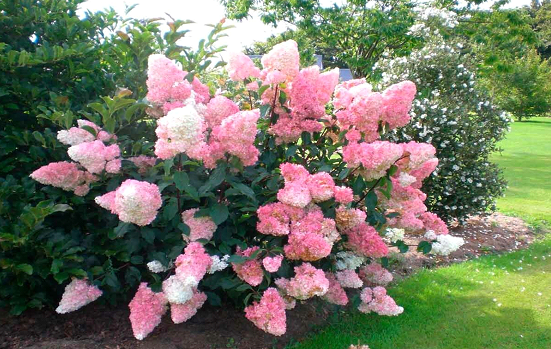
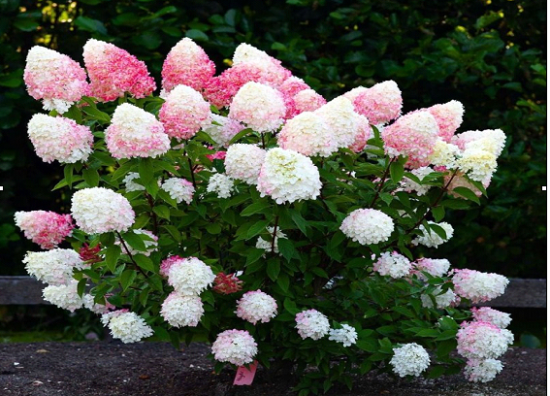
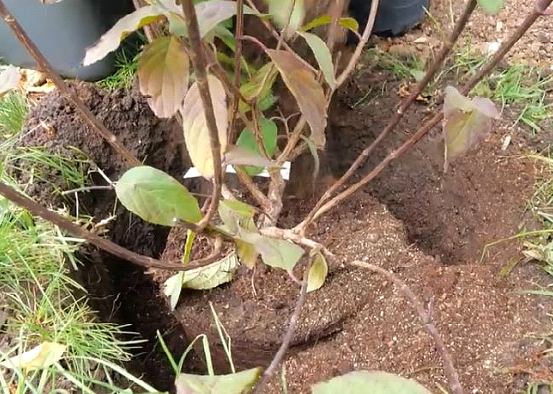
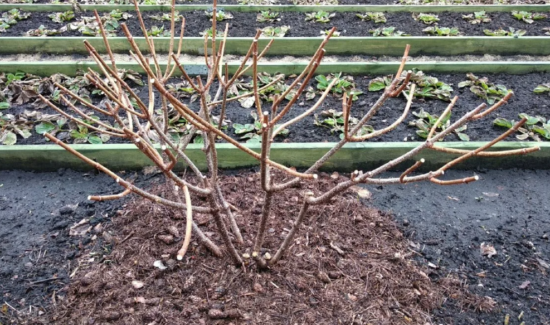
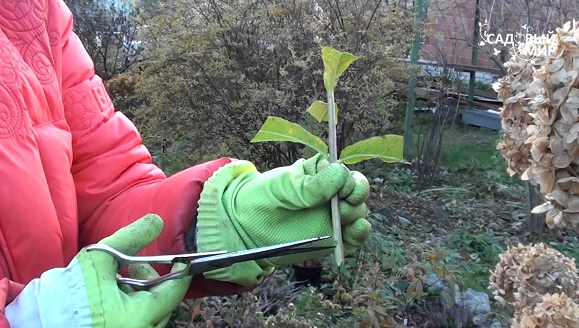
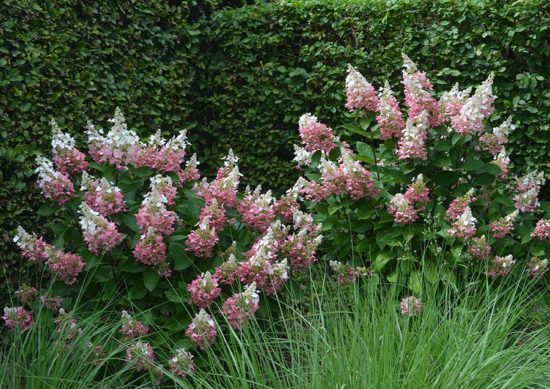


 CUCUMBERS NEVER GET SICK, I'VE BEEN USING ONLY THIS FOR 40 YEARS! I SHARE A SECRET WITH YOU, CUCUMBERS ARE LIKE THE PICTURE!
CUCUMBERS NEVER GET SICK, I'VE BEEN USING ONLY THIS FOR 40 YEARS! I SHARE A SECRET WITH YOU, CUCUMBERS ARE LIKE THE PICTURE! You can dig a bucket of potatoes from each bush. Do you think these are fairy tales? Watch the video
You can dig a bucket of potatoes from each bush. Do you think these are fairy tales? Watch the video
 How our fellow gardeners work in Korea. There is a lot to learn and just fun to watch.
How our fellow gardeners work in Korea. There is a lot to learn and just fun to watch. Eye trainer. The author claims that with daily viewing, vision is restored. They don't charge money for views.
Eye trainer. The author claims that with daily viewing, vision is restored. They don't charge money for views. A 3-ingredient cake recipe in 30 minutes is better than Napoleon. Simple and very tasty.
A 3-ingredient cake recipe in 30 minutes is better than Napoleon. Simple and very tasty. Therapeutic exercises for cervical osteochondrosis. A complete set of exercises.
Therapeutic exercises for cervical osteochondrosis. A complete set of exercises. Which indoor plants match your zodiac sign?
Which indoor plants match your zodiac sign? What about them? Excursion to German dachas.
What about them? Excursion to German dachas.